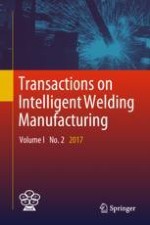2018 | OriginalPaper | Chapter
Investigation on Surface Quality in a Hybrid Manufacturing System Combining Wire and Arc Additive Manufacturing and Machining
Authors : Fang Li, Shujun Chen, Junbiao Shi, Hongyu Tian
Published in: Transactions on Intelligent Welding Manufacturing
Publisher: Springer Singapore
Activate our intelligent search to find suitable subject content or patents.
Select sections of text to find matching patents with Artificial Intelligence. powered by
Select sections of text to find additional relevant content using AI-assisted search. powered by
